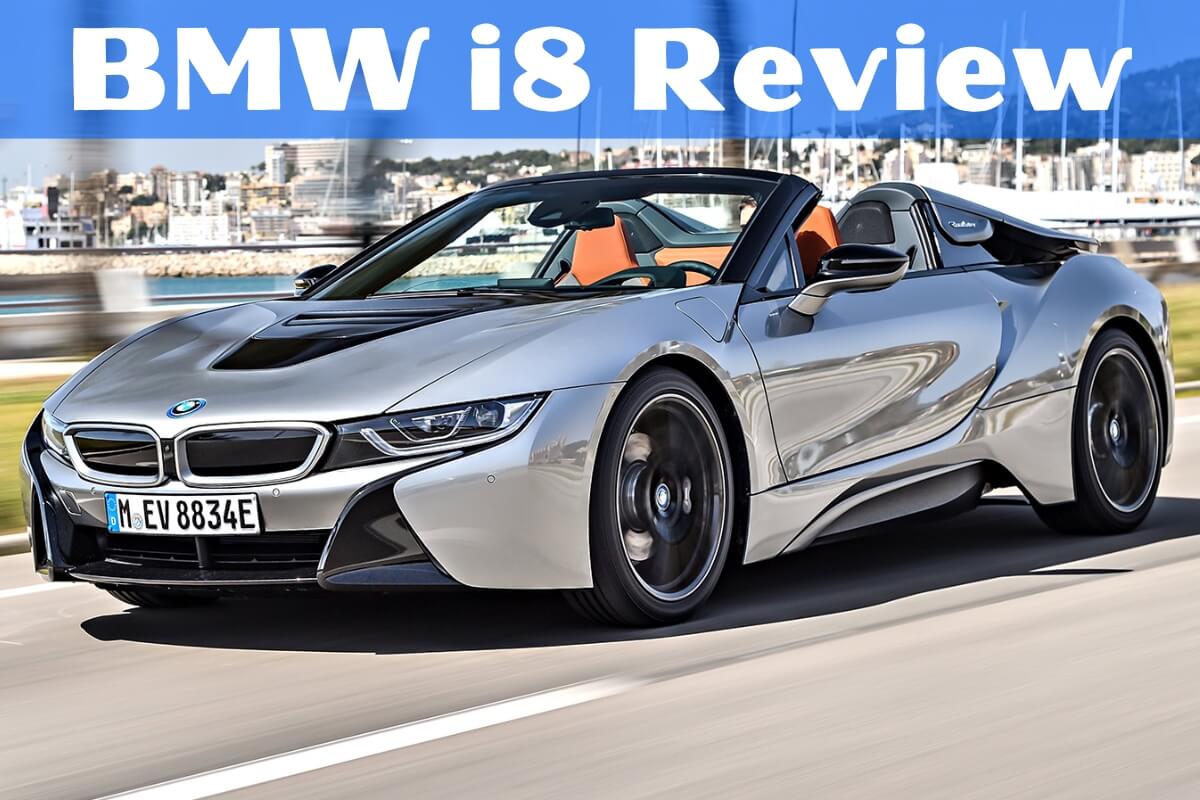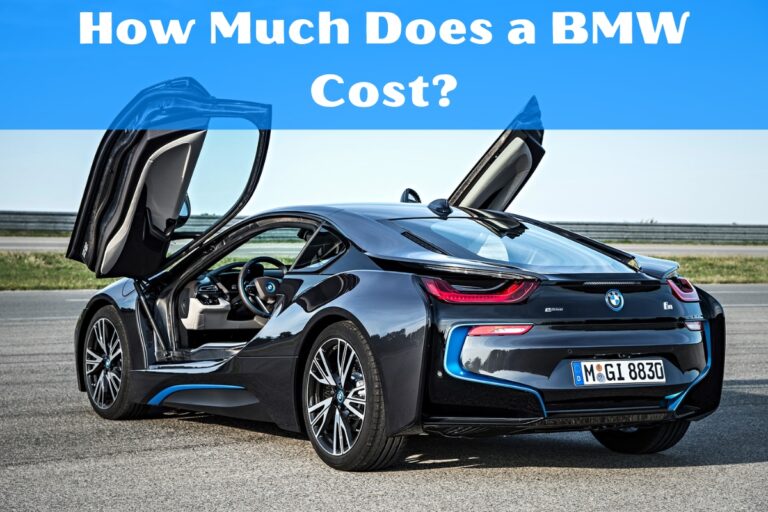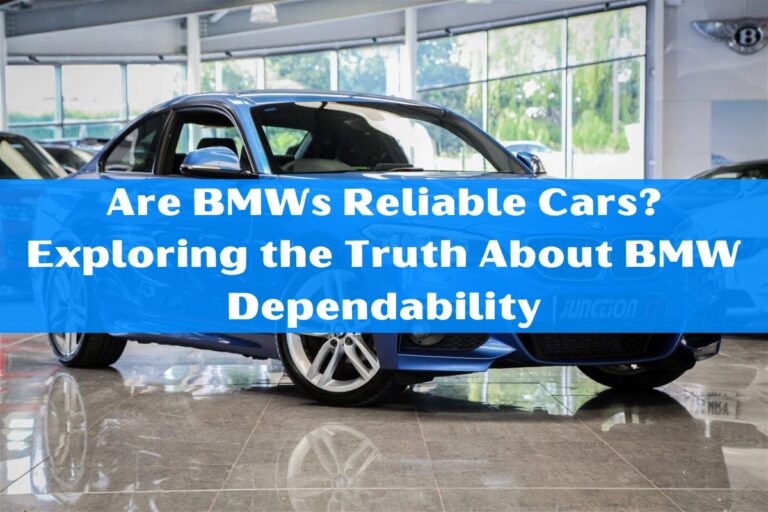BMW i8 Review: Futuristic Hybrid Sports Car Examined

Imagine a future where high-performance sports cars have radical designs and advanced powertrains that allow you to drive emissions-free around town, while still letting you experience breathtaking acceleration and precise handling. This vision of a sustainable yet exhilarating driving experience has become a reality in the form of the BMW i8.
Is the BMW i8 the ultimate eco-friendly supercar of the future? Yes, with its avant-garde styling, innovative hybrid powertrain, and lightweight carbon fiber construction, the BMW i8 delivers electrifying performance while keeping emissions low – though it comes at a premium price.
What Makes the BMW i8 So Special?
The BMW i8 stands out from the crowd with its radical styling that looks straight out of a sci-fi movie. The sleek, low-slung coupe body features aggressive air channels, ultra-bright LED lighting accents, and upward-swinging “scissor” doors. These dramatic doors make every entrance and exit an event.
But the i8 is more than just a visually arresting design exercise. Under its futuristic skin lies an advanced lightweight carbon fiber reinforced plastic (CFRP) body structure that increases strength while reducing weight. This innovative monocoque passenger cell helps offset the mass of the sophisticated hybrid powertrain.
Speaking of the powertrain, the i8 combines a rear-mounted 1.5-liter turbocharged three-cylinder gas engine with a front-mounted electric motor and lithium-ion battery pack. This plug-in hybrid system enables guilt-free electric driving around town with the bonus of thrilling acceleration and long-distance cruising capability when the gasoline engine joins the party.
BMW i8’s Futuristic Design Inside and Out
From every angle, the BMW i8 looks like a concept car brought to life. Its low stance, sweeping character lines, and unusual styling proportions make it appear as if it came from the not-too-distant future. The signature U-shaped LED headlights and taillights accentuate the futuristic flair.
The boldest design statement is undoubtedly the upward-swinging doors. While challenging to enter and exit gracefully at first, these “scissor” doors immediately turn heads and add a layer of theater every time you hop in or out.
The cockpit continues the forward-looking design theme with an asymmetric, driver-focused layout. You’re greeted by angled surfaces, exposed carbon fiber accents, and digital displays that replace traditional analog gauges. It all looks straight from a science fiction movie set.
While unconventional, the cabin does provide a decent amount of space for a mid-engine sports car. There are even small rear seats, though legroom is predictably tight. Cargo room is limited to just 5.4 cubic feet of space under the rear hatch.
How the BMW i8 Hybrid System Works
At the heart of the BMW i8 is its advanced plug-in hybrid powertrain that combines gasoline and electric power sources. In the rear sits a small yet mighty 1.5-liter turbocharged 3-cylinder engine generating 228 hp and 236 lb-ft of torque. This conventional gas engine is partnered with a 141 hp electric motor that drives the front wheels.
Together, this hybrid system produces a total of 369 hp and an abundant 420 lb-ft of torque, which is sent to all four wheels through a 6-speed automatic transmission. This allows the i8 to accelerate from 0-60 mph in just 4.2 exhilarating seconds on its way to an electronically limited top speed of 155 mph.
What’s impressive is that the BMW i8 can operate in three distinct modes:
- Pure electric power for emissions-free driving around town at speeds up to 75 mph. The i8 has an EPA-rated 18-mile electric-only range.
- Gasoline engine power when higher speeds or longer drives deplete the battery pack.
- Combined hybrid mode that seamlessly blends both power sources for maximum thrust and efficiency.
With the ability to recharge the lithium-ion battery at home or public charging stations, you can enjoy whisper-quiet electric driving interspersed with periods of thrilling hybrid performance when the mood strikes.
How Fast Is the BMW i8?
Make no mistake, even though it has an eco-friendly slant, the i8 delivers scintillating straight-line performance. BMW quotes a 0-60 mph time of just 4.2 seconds, thanks to the instantaneous torque provided by the electric motor working in concert with the gasoline engine’s power.
That type of acceleration will push you back into the lightweight composite seats and pin your head firmly to the headrest. The rush of speed is accompanied by a synthesized yet invigorating exhaust growl, further enhancing the visceral thrills.
While scorching off the line, the i8 does run out of steam at higher speeds when compared to more conventional high-end sports cars. Its rather meager 1.5-liter three-cylinder doesn’t have the outright power required to keep pace with something like a Porsche 911 Turbo beyond triple-digit velocities.
However, the i8’s sub-4.5-second 0-60 mph times and electronic speed limiter set at 155 mph mean it has more than enough firepower on tap to satisfy most driving enthusiasts. The instantaneous throttle response and linear power delivery further enhance the exciting driving experience.
What’s It Like Inside the BMW i8?
Swing open the dihedral “scissor” doors, and you’ll discover an equally avant-garde cabin that carries through the futuristic design elements found outside. The steeply angled surfaces, asymmetrical dash layout, and exposed carbon fiber accents won’t be found in any other BMW.
While the materials are exceptionally high-quality, there’s a decidedly stark and technical ambiance that sets the tone for spirited motoring experiences. You won’t find the wood or chrome brightwork of traditional luxury cars here.
The low-slung, “cockpit” seating position heightens the sports car feeling, though it does hamper outward visibility compared to many other BMWs. Sightlines out the small rear window and over the sharply raked hoodline take some adjustment.
At least passengers won’t feel overly cramped inside, with the composite body structure allowing a decent amount of interior space. While compact, the two rear seats expand the i8’s cabin beyond the typical two-seater layout and provide a spot for children on short trips.
Cargo capacity is quite limited, with just 5.4 cubic feet of space under the rear hatch. The compact trunk opening itself is also a challenge for loading bulky items. For daily driving duties, the i8’s total cargo room is better suited to groceries than full-size suitcases.
How Practical Is the BMW i8 for Daily Use?
The biggest limiting factor for daily driving in the i8 is its short 18-mile electric-only driving range. While ideal for running emissions-free local errands, you’ll need to rely on the gasoline engine for longer commutes or road trips, negating some of the eco benefits.
On the plus side, the EPA rates the i8 at a very respectable 76 MPGe combined in hybrid mode, and a still impressive 28 mpg combined on just gasoline power. These are impressive figures for a high-performance sports car, so fuel costs won’t bankrupt you if you use it regularly.
Road manners lean more towards the firm, connected side versus traditional luxury car compliance. The stiff carbon fiber chassis allows excellent body control through corners, but less isolation from bumps and road imperfections than you’d find in a larger BMW sedan.
The i8’s wild styling is also a hindrance when it comes to day-to-day visibility and parking ease. The tall body, tiny greenhouse, and severely raked windshield make for massive blind spots all around. Finding an open space that allows graceful door-opening is also an exercise in patience.
What Does the BMW i8 Cost?
With its lightweight carbon fiber body structure and sophisticated hybrid hardware, the BMW i8 carried a starting MSRP of around $150,000 when new. That eye-watering sum positioned the i8 in the realm of high-end exotic sports cars.
While that is undeniably a lot of money to pay for a compact two-door hybrid coupe, the i8 did qualify for federal tax credits due to its plug-in electric driving capability. This helped offset some of the high costs associated with its advanced lightweight construction and hybrid powertrain technology.
These days, used examples of the BMW i8 can be found for significantly less, with prices ranging from around $60,000 to $80,000 depending on mileage, condition, and optional equipment levels. For those seeking a more attainable path to this futuristic sports car ownership, picking up a low-mileage certified pre-owned model could make fiscal sense.
BMW i8 Pros and Cons
To summarize this BMW i8 review, let’s examine some key pros and cons:
Pros:
- Radical, head-turning styling inside and out
- Lightweight carbon fiber construction increases performance
- Plug-in hybrid powertrain for gas-free driving around town
- Instantaneous electric torque delivers thrilling acceleration
- Premium cabin materials and build quality
- Semi-practical with small rear seats
Cons:
- Extremely high pricing, even for an exotic sports car
- Short 18-mile electric driving range limits usability
- Not as viscerally quick as some rivals at higher speeds
- Poor outward visibility and cramped cargo space
- Firm ride quality won’t suit all tastes
- Controls and displays take some getting used to
In Conclusion
The BMW i8 is a stunning technological showcase that blends advanced hybrid efficiency with scintillating straight-line performance and precisepredictable handling dynamics. Its radical futuristic styling with upward-swinging “scissor” doors instantly turns heads wherever it goes.
While exotic and exclusive, the i8 also boasts legitimate emissions-free daily driving capability thanks to its plug-in hybrid powertrain with an 18-mile electric driving range. When you need to go further, the gasoline engine seamlessly joins the electric motor for spirited yet relatively efficient longer-distance travel.
Inside, the cabin continues the avant-garde futuristic theme with premium materials, digital displays, and a low-slung sports car seating position. There’s even a small set of rear seats boosting the i8’s versatility over traditional two-seat sports cars, though cargo room is limited.
Unquestionably, the BMW i8 comes with some compromises in the name of cutting-edge technology and ambitious weight savings. Outward visibility is compromised, trunk space is tiny, and the on-road dynamics, while athletic, can’t quite measure up to the visceral seat-of-the-pants thrills provided by more powerful, conventional supercars in this premium price range.
Those seeking the ultimate performance driving experience may find the i8’s eco-friendly civility and emphasis on efficiency a bit disappointing. But for those wanting a radically styled, high-tech sports car that can play the role of a comfortable daily driver while providing emotional design and thrilling yet emissions-free power delivery, the BMW i8 is an uncompromising champion.
This futuristic plug-in hybrid shows that sports cars don’t have to be gas-guzzling environmental catastrophes to be immensely fun and desirable. While definitely not cheap, the BMW i8 opens up an electrifying new world of driving exhilaration combined with eco-minded versatility that few rivals can match.






